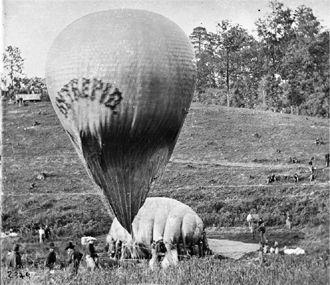Read A World on Fire: Britain's Crucial Role in the American Civil War Online
Authors: Amanda Foreman
Tags: #Europe, #International Relations, #Modern, #General, #United States, #Great Britain, #Public Opinion, #Political Science, #Civil War Period (1850-1877), #19th Century, #History
A World on Fire: Britain's Crucial Role in the American Civil War (148 page)


62.
U.S. Secretary of State William Seward taking a party of diplomats to see Trenton Falls in New York on August 18, 1863. (left to right) William Seward, Russian Minister Baron Stoeckl, Nicaraguan Minister Luis Molina, British Minister Lord Lyons, French Minister M. Mercier, German Minister Rudolph Schleiden, Bertinatti (Italian legation), Swedish Minister Count Piper, M. Bodisco (Russian legation), George Sheffield (British legation), and Mr. Donaldson (U.S. State Department).
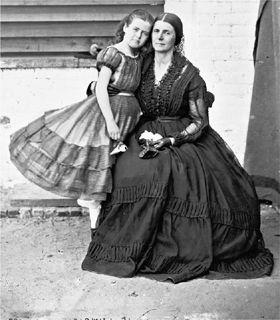
63.
Rose Greenhow (1817–64), Confederate spy and envoy, with her daughter Little Rose, in a photograph taken in Federal prison. Jefferson Davis sent her to England in 1863 in the hope that she would persuade either Lord Palmerston or Emperor Napoleon III to recognize Confederate independence.
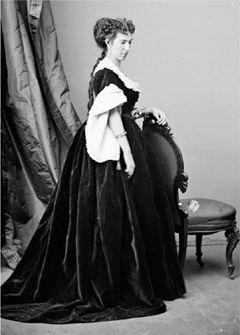
64.
Belle Boyd (1844–1900), Confederate heroine, spy, prisoner, and dispatch carrier for the Confederate government. Belle’s attempt to run the blockade out of Wilmington in 1864 was foiled by the Federal blockade. She fell in love with her captor and they were married in St. James’s Church, Piccadilly.
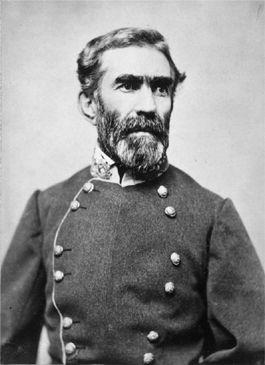
65.
General Braxton Bragg (1817–76), Confederate commander of the Army of Tennessee and the most unpopular general in the South. His subordinates wrote to Richmond in October 1863, after the Battle of Chickamauga, asking for a different leader, but Davis insisted that Bragg stay.
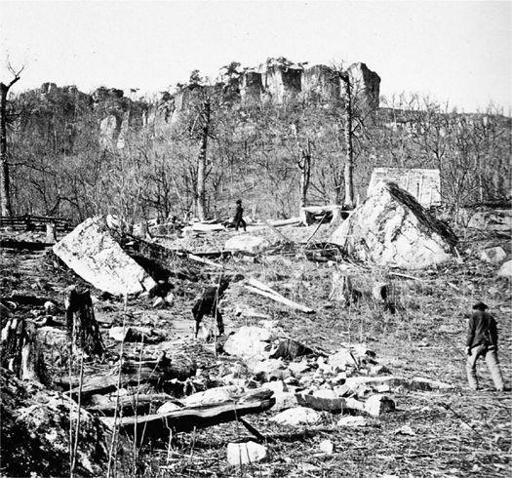
66.
Civilians hunting for souvenirs the day after the Battle of Chattanooga on November 25, 1864. General Bragg had to retreat, throwing away the victory of Chickamauga in September and opening the way for a Federal invasion of the Deep South.
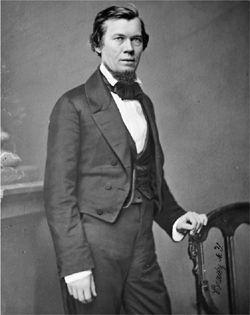
67.
Jacob Thompson (1810–85), Confederate commissioner in Canada. Jefferson Davis gave him $1 million in gold to fund secret operations against Northern targets, both civilian and military. Thompson’s plots became increasingly destructive and terror-driven as the war progressed.
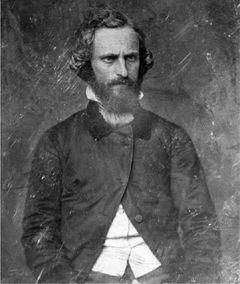
68.
Clement C. Clay (1816–82), Confederate commissioner in Canada. Clay was sent out at the same time as Jacob Thompson, but they were temperamentally unsuited to working together and operated out of different cities.
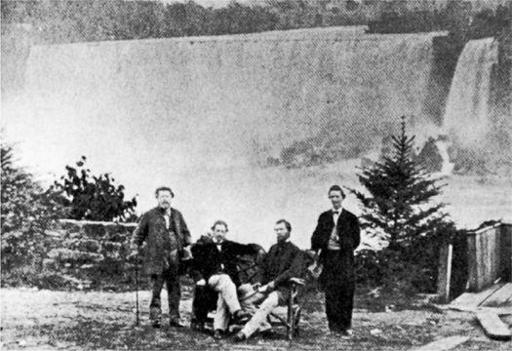
69.
Confederate plotters meeting on the Canadian side of Niagara Falls, July 1864. (left to right) George N. Sanders, Captain John B. Castleman, Colonel George St. Leger Grenfell, British volunteer in the Confederate army, and Captain Thomas H. Hines. Together they hatched a plot to take Chicago and liberate Confederate prisoners in the surrounding camps. Castleman and Grenfell were captured, but only Grenfell was sentenced to death. He drowned while trying to escape the harshest Federal prison in the U.S., Fort Jefferson, on the Dry Tortugas in the Gulf of Mexico.
Among the innovations of the American Civil War was the use of observation balloons, heavier and more accurate artillery, and the reliance on railways to mass-transport troops and arms.
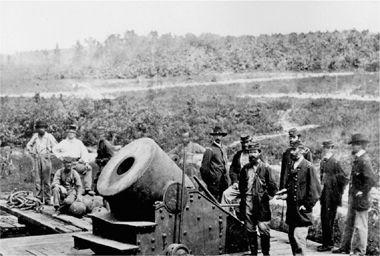
70.
Mounted cannon—the “Dictator,” most powerful mortar in the war, so heavy it had to be fitted to a specially reinforced railway car.
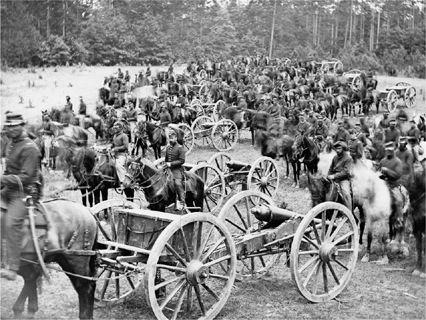
71.
Massed field artillery.
